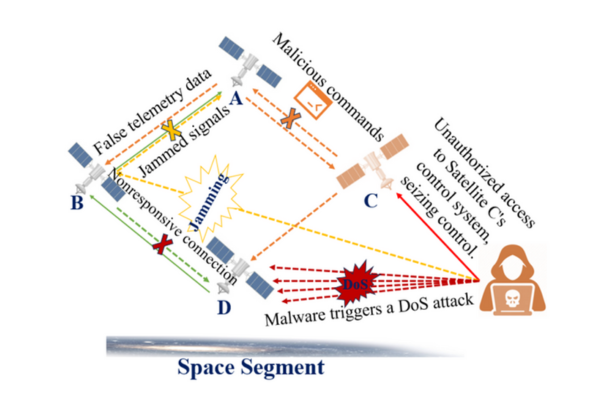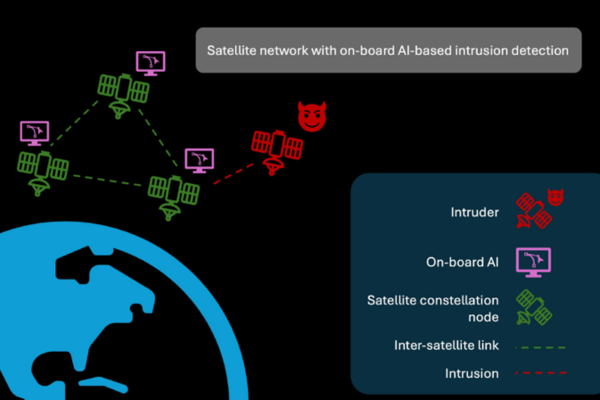As Australia’s space industry expands and our reliance on satellite technology deepens, so too does the threat of cyberattack, highlighting the urgent need for cyber-resilient space systems.
Satellite technology, whether civilian or defence, plays a critical role in our everyday lives; from powering everyday services like GPS and weather forecasting, to enabling secure military communications and intelligence gathering.
Despite the ever-growing risks of cyber interference, modern satellites – especially small and low-power ones – often lack lightweight, tailored defences to operate securely in space’s harsh, contested environment.
The space sector’s rapid growth toward a $1 trillion global industry amplifies the urgency for resilient, real-time protection. In Australia alone, the space industry is projected to triple in size to $12 billion by 2030, making cybersecurity not just a technical necessity, but a national strategic priority.
This SmartSat project, led by Dr Melrose Brown from the University of New South Wales (UNSW) Canberra, is seeking to rectify this issue by producing state-of-the-art distributed-AI frameworks for cybersecure and resilient space systems.
Combining over a decade of research, UNSW Canberra Space and the UNSW Institute for Cyber Security are bringing together their collective knowledge of miniature satellite mission design and operations experience with cutting-edge cyber research to develop these next-generation AI models, purpose-built for space.
 A diagram showing various types of cyberattacks that might affect a satellite network
A diagram showing various types of cyberattacks that might affect a satellite network
Rather than solely focusing on attack prevention, these models are built for cyber resilience, enabling satellites to detect, withstand, and recover from disruptions autonomously, even when disconnected from ground control.
“As satellite networks get more complex and rely on increasingly large constellations, the need to provide cyber security through distributed and intelligent approaches grows,” said Peter Kerr, SmartSat’s Defence and National Security Coordinator.
“This research builds a critical foundation knowledge set in Australia for how to protect future space capabilities, including those likely to be built through hybrid space architectures that combine commercial satellites with traditional military satellites.”
The team is developing embedded AI algorithms capable of running onboard satellites with limited size, weight, power, and processing capacity. These algorithms use techniques such as anomaly detection, predictive modelling, and distributed learning to identify a range of threats – including signal jamming and unauthorised system access – and respond without the need for ground intervention.
The long-term goal for this project is to build constellations that work together to maintain mission continuity, even in degraded or denied conditions.
By integrating resilience into the system architecture from the ground up, this work moves beyond conventional cybersecurity, aiming instead for robust and self-sustaining satellite constellations capable of operating securely in contested and unpredictable environments.
The underlying research has been driven by real-world challenges identified through consultation and engagement with Defence, industry, policy makers, space and cyber experts, with the team priorities shaped by use cases such as jamming resilience and intrusion detection.
At the centre of the research program is the Intelligent Satellite Constellation Sandbox (ISaCS) – a high fidelity, flight representative testbed capable of simulating threats, train systems, and interventions for building resilience into tomorrow’s space networks. By developing AI models trained on real satellite telemetry and capable of operating on embedded hardware, the project team is able to demonstrate that advanced cyber defence is feasible even within the constraints of small satellite platforms. These models support real-time detection and response to threats, reducing reliance on ground control and increasing operational assurance.
Critical to the project’s success is the generation of high-quality synthetic cyber-attack data tailored to satellite networks. This data – rarely available and difficult to produce – is a critical enabler for training and benchmarking future AI systems. By making these resources available to the broader research community, the team is also laying the foundations for long-term national capability in space cyber resilience.
 A schematic of a satellite network subject to a cyber intrusion
A schematic of a satellite network subject to a cyber intrusion
The Cyber Secure and Resilient Intelligent Space Systems project is currently transitioning from design to the implementation phase, with the team actively developing the hardware, software, and cyber-attack scenarios required to generate realistic training data based on real-world satellite operations. Early AI models have already been deployed on embedded GPU-class hardware representative of what could be flown onboard future spacecraft.
The next phase of the project will focus on refining these models, expanding test scenarios, and exploring how constellations can share intelligence to detect and respond to threats collectively, paving the way for future in-orbit demonstrations and scalable, deployable cyber-resilience space systems.
The ultimate outcome is to join the Space Information Sharing and Analysis Centre, where this work can directly contribute to a network of testbeds under development in research laboratories across the globe.